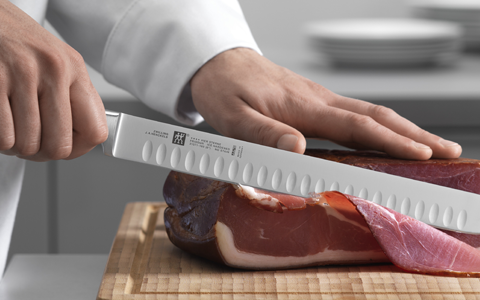Kitchen Knives: Quality vs. Price
A quality knife won’t turn you into a great chef overnight, but it will give you comfort, control, and the joy of slicing through ingredients with ease and precision. When it comes to kitchen knives, high price is usually tied to high quality. The real question is: what’s the difference between an expensive knife and a cheap one? And how much do these differences matter for a home cook?
What Are You Really Paying for in a Premium Knife?
To an untrained hand, the differences might not be obvious at first. Both cheap and expensive knives feel sharp and seem to work fine. But over time, the differences become clear. A quality knife lasts longer and stands out with ease of use and comfort. Let’s break it down:
1. Blade Material
All knives—cheap or expensive—require regular sharpening. However, quality steel stays sharp longer, meaning fewer sharpening sessions and greater durability overall.
Common blade materials include stainless steel, carbon steel, and ceramic. Carbon steel is hard and holds a sharp edge longer. Stainless steel resists rust and staining. Ceramic stays sharp the longest but is more fragile and requires gentle care.
High-end knives are also shaped by the sophistication of the manufacturing process. Reputable brands like Zwilling even produce their own proprietary steel and use techniques like FRIODUR—a cold hardening process that enhances corrosion resistance and blade strength.
2. Handle Design
Premium knives feature ergonomic handles, balanced weight distribution, and high-quality materials. This prevents hand fatigue and improves control during long use.
3. Overall Comfort
A well-balanced knife offers smoother cutting, greater safety, and a relaxed grip. Top manufacturers obsess over details—weight, feel, and flow between blade and handle—to offer a seamless user experience.
Before You Buy…
1. Blade Sharpness
A new knife should be razor sharp. Contrary to myth, sharper knives are actually safer—they require less force and reduce the chance of slipping. Invest in a sharpening tool or take your knife for professional sharpening once or twice a year.
2. Weight and Comfort
It’s not exactly finding your soulmate, but a good knife should feel like an extension of your hand. Try it in-store if possible—you’ll feel when it’s right.
3. Blade Length and Height
A blade that’s too short or too narrow can make certain tasks more difficult or uncomfortable. A universal and safe choice for most home cooks is the Chef’s Knife—balanced in weight and size, and versatile enough to handle almost any cutting task.
Essential Kitchen Knives
- Chef’s Knife: Ideal for chopping, slicing, dicing fruits, vegetables, and large cuts of meat.
- Serrated Bread Knife: Best for slicing bread, cakes, or anything with a crispy crust and soft interior.
- Paring Knife: Great for peeling and trimming fruits and vegetables quickly and easily.
- Slicing Knife: Designed with a long blade for cleanly slicing meats.
If you’re new to quality knives, don’t rush into buying a full matching set. Research a few brands, their technologies, and materials. Start with just one—ideally a Chef’s Knife. Once you find your perfect match, you can gradually build a collection of sharp-edged treasures.


